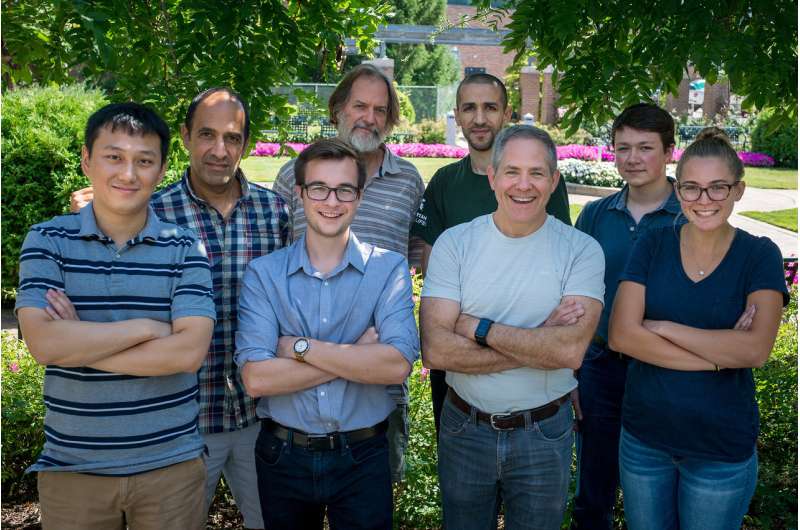New discovery of a photobase so strong, it merits moniker of 'super'

The power of the sun is so incredible that it could fulfill the world's energy needs in roughly 90 minutes. While plants have mastered photosynthesis, harnessing sunlight into chemical energy, scientists are still trying to decipher its secrets.
A new discovery of a light-induced super photobase at Michigan State University, however, is revealing some of photosynthesis' desirable traits. The interdisciplinary team of scientists was able to document the ultrafast dynamics of the super photobase that is 10 million times stronger than anything previously discovered.
"We used lasers to make the discovery, but the process doesn't require them; it can be done with sunlight," said Marcos Dantus, University Distinguished Professor in chemistry and physics who co-led this research. "Since the process is completed in a billionth of a second, the lasers simply allowed us to take snapshots in order to dissect it and measure the chemical changes."
The discovery's explanation requires a primer in basic chemistry. Many chemistry experiments observe the interaction between acids and bases. The traditional measure is a scale from zero to 14 - acids have low pH, bases have high pH and 7 is neutral.
The energy of a photon, particles that carry light across space, is what separates the super photobase from simply a super base. The addition of the photon dramatically increases the molecular reactivity. The increase is so great, in fact, that it's off the traditional pH scale by an unheard of 7 units, reaching 21.
While many super acids have been discovered, this is the first time that a super base at this level has been described, said Babak Borhan, MSU chemistry professor and research co-leader.
"There have been other photobases observed but not as strong. We see a 14 log unit, or about 100 million-million times greater, change in basicity when exposed to light; this is why we're calling it a super photobase," he said. "We've demonstrated that we're harnessing the energy of light and making a super-charged particle. The prevalence of photoacids has led to their exploitation in a number of avenues. The lack of photobases, though, has slowed scientists from exploring their full utility. We believe this helps overcome that challenge."
The applications of this discovery could lead to advances in solar energy capture, such as photogenerated fuels. It also can be used to develop doped materials for proton connectivity, environmental probes and even shed light on the mysteries of protein folding—the first step to many debilitating diseases, Borhan added.
If the power of photobases can be interfaced with devices, another interesting possibility is powering cars with water. If hydrogen could be split from oxygen, the energy could be used as hydrogen fuel cells and reduce dependence on fossil fuels.
The next phase of this research will be to control the transfer of protons from the super photobase molecule to the surrounding environment. The use of strong bases, as well as strong acids, is challenging because they require special hardware and solvents. By pinpointing the power of light, however, the super photobase is confined to the area that's lit. It also allows for the use of common solvents, which makes the experiments easier to perform.
More information: Wei Shang et al, Ultrafast Dynamics of a "Super" Photobase, Angewandte Chemie International Edition (2018). DOI: 10.1002/anie.201806787
Journal information: Angewandte Chemie International Edition
Provided by Michigan State University



















